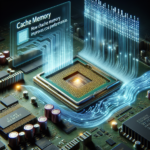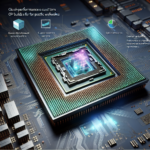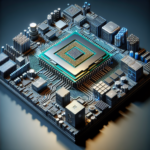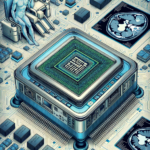The Future of CPUs: Trends and Predictions
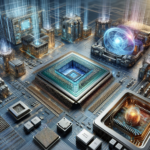
The Future of CPUs: Trends and Predictions
The Central Processing Unit (CPU) has been the heart of computing devices for decades. As technology advances, the future of CPUs is a topic of great interest and speculation. This article delves into the emerging trends and predictions that are shaping the future of CPUs, exploring advancements in architecture, manufacturing processes, and the impact of artificial intelligence (AI) and quantum computing.
Advancements in CPU Architecture
Multi-Core and Many-Core Processors
One of the most significant trends in CPU development is the shift towards multi-core and many-core processors. Traditional single-core CPUs have reached their performance limits due to thermal and power constraints. Multi-core processors, which integrate multiple processing units on a single chip, offer a solution by enabling parallel processing. This trend is expected to continue, with many-core processors featuring dozens or even hundreds of cores becoming more common.
Heterogeneous Computing
Heterogeneous computing involves the integration of different types of processors, such as CPUs, Graphics Processing Units (GPUs), and specialized accelerators, on a single chip. This approach allows for more efficient processing by leveraging the strengths of each type of processor. For example, GPUs excel at parallel tasks, while CPUs are better suited for sequential processing. The future of CPUs will likely see increased adoption of heterogeneous computing to enhance performance and energy efficiency.
Chiplet Design
Chiplet design is an emerging trend where a CPU is constructed from multiple smaller chips, or chiplets, rather than a single monolithic die. This approach offers several advantages, including improved yield rates, reduced manufacturing costs, and the ability to mix and match different types of chiplets to create customized processors. Companies like AMD and Intel are already exploring chiplet designs, and this trend is expected to gain momentum in the coming years.
Advancements in Manufacturing Processes
Smaller Process Nodes
The semiconductor industry has consistently pushed the boundaries of miniaturization, with process nodes shrinking from 14nm to 10nm, 7nm, and beyond. Smaller process nodes allow for more transistors to be packed into a given area, leading to increased performance and energy efficiency. The future of CPUs will likely see continued advancements in process node technology, with 3nm and even 2nm nodes on the horizon.
3D Stacking
3D stacking, or 3D integration, involves stacking multiple layers of silicon wafers vertically to create a single chip. This approach can significantly increase transistor density and improve performance while reducing power consumption. 3D stacking is already being used in memory technologies like High Bandwidth Memory (HBM), and its adoption in CPUs is expected to grow, enabling more powerful and efficient processors.
Advanced Packaging Techniques
Advanced packaging techniques, such as fan-out wafer-level packaging (FOWLP) and embedded multi-die interconnect bridge (EMIB), are becoming increasingly important in CPU development. These techniques allow for better thermal management, improved signal integrity, and higher interconnect density. As CPUs become more complex, advanced packaging will play a crucial role in maintaining performance and reliability.
The Impact of Artificial Intelligence
AI-Optimized CPUs
Artificial intelligence (AI) is transforming various industries, and its impact on CPU development is profound. AI-optimized CPUs are designed to accelerate machine learning and deep learning workloads, featuring specialized instructions and hardware accelerators. Companies like Intel and AMD are already incorporating AI-specific features into their processors, and this trend is expected to continue as AI becomes more pervasive.
Neuromorphic Computing
Neuromorphic computing is an emerging field that aims to mimic the structure and function of the human brain. Neuromorphic processors use spiking neural networks to process information in a way that is more efficient and parallel than traditional CPUs. While still in the experimental stage, neuromorphic computing holds promise for revolutionizing AI and other computationally intensive tasks.
The Role of Quantum Computing
Quantum Processors
Quantum computing represents a paradigm shift in computing, leveraging the principles of quantum mechanics to perform calculations that are infeasible for classical computers. Quantum processors, or qubits, can exist in multiple states simultaneously, enabling massive parallelism. While practical quantum computers are still in development, their potential impact on the future of CPUs is significant, particularly for tasks like cryptography, optimization, and simulation.
Hybrid Classical-Quantum Systems
In the near term, hybrid classical-quantum systems are expected to emerge, combining traditional CPUs with quantum processors. These systems will leverage the strengths of both types of processors, using classical CPUs for general-purpose tasks and quantum processors for specific, computationally intensive problems. This hybrid approach could accelerate the adoption of quantum computing and drive further innovation in CPU design.
Energy Efficiency and Sustainability
Low-Power CPUs
As energy consumption becomes a growing concern, the development of low-power CPUs is gaining importance. Advances in process node technology, architecture, and power management techniques are enabling the creation of CPUs that deliver high performance while consuming less power. This trend is particularly relevant for mobile devices, edge computing, and data centers, where energy efficiency is critical.
Green Computing Initiatives
Green computing initiatives aim to reduce the environmental impact of computing by promoting energy-efficient designs, sustainable manufacturing practices, and recycling of electronic waste. The future of CPUs will likely see increased emphasis on green computing, with manufacturers adopting more eco-friendly practices and developing processors that minimize energy consumption and carbon footprint.
Frequently Asked Questions (FAQ)
What is the difference between a multi-core and a many-core processor?
A multi-core processor typically has a small number of cores, usually between 2 and 16, designed for general-purpose computing tasks. A many-core processor, on the other hand, features a much larger number of cores, often exceeding 50, and is optimized for parallel processing tasks such as scientific simulations and AI workloads.
How does heterogeneous computing improve CPU performance?
Heterogeneous computing improves CPU performance by integrating different types of processors, such as CPUs, GPUs, and specialized accelerators, on a single chip. This allows each type of processor to handle tasks that it is best suited for, resulting in more efficient processing and better overall performance.
What are the benefits of chiplet design in CPUs?
Chiplet design offers several benefits, including improved yield rates, reduced manufacturing costs, and the ability to create customized processors by mixing and matching different types of chiplets. This approach also allows for more flexibility in integrating new technologies and scaling performance.
What is 3D stacking, and how does it impact CPU performance?
3D stacking involves stacking multiple layers of silicon wafers vertically to create a single chip. This approach increases transistor density, improves performance, and reduces power consumption. 3D stacking is expected to play a significant role in the future of CPUs by enabling more powerful and efficient processors.
How are AI-optimized CPUs different from traditional CPUs?
AI-optimized CPUs are designed with specialized instructions and hardware accelerators to accelerate machine learning and deep learning workloads. These processors are optimized for parallel processing and can handle AI tasks more efficiently than traditional CPUs.
What is neuromorphic computing, and what are its potential applications?
Neuromorphic computing aims to mimic the structure and function of the human brain using spiking neural networks. This approach offers more efficient and parallel processing compared to traditional CPUs. Potential applications include AI, robotics, and computational neuroscience.
How will quantum computing impact the future of CPUs?
Quantum computing has the potential to revolutionize computing by performing calculations that are infeasible for classical computers. While practical quantum computers are still in development, hybrid classical-quantum systems are expected to emerge, combining traditional CPUs with quantum processors for specific, computationally intensive tasks.
Why is energy efficiency important in CPU development?
Energy efficiency is important in CPU development because it reduces power consumption, lowers operational costs, and minimizes the environmental impact of computing. Advances in process node technology, architecture, and power management techniques are enabling the creation of low-power CPUs that deliver high performance while consuming less energy.
Conclusion
The future of CPUs is poised for exciting advancements driven by trends in architecture, manufacturing processes, AI, and quantum computing. Multi-core and many-core processors, heterogeneous computing, chiplet design, and 3D stacking are set to redefine CPU performance and efficiency. AI-optimized CPUs and neuromorphic computing will accelerate AI workloads, while quantum computing holds the promise of solving complex problems beyond the reach of classical computers. As energy efficiency and sustainability become increasingly important, the development of low-power CPUs and green computing initiatives will play a crucial role in shaping the future of computing. The ongoing innovation in CPU technology promises to deliver more powerful, efficient, and versatile processors that will drive the next generation of computing applications.

